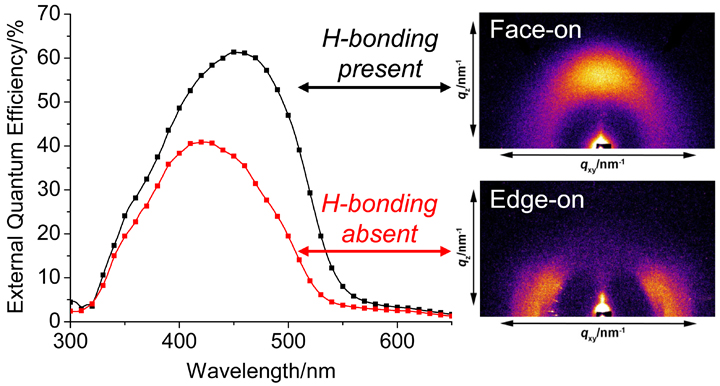
For organic photovoltaic (OPV) cells based on the bulk heterojunction (BHJ) structure, it remains challenging to rationally control the degree of phase separation and percolation within blends of donors and acceptors to secure optimal charge separation and transport. Reported is a bottom-up, supramolecular approach to BHJ OPVs wherein tailored hydrogen bonding (H-bonding) interactions between π-conjugated electron donor molecules encourage formation of vertically aligned donor π-stacks while simultaneously suppressing lateral aggregation; the programmed arrangement facilitates fine mixing with fullerene acceptors and efficient charge transport. The approach is illustrated using conventional linear or branched quaterthiophene donor chromophores outfitted with terminal functional groups that are either capable or incapable of self-complementary H-bonding. When applied to OPVs, the H-bond capable donors yield a two-fold enhancement in power conversion efficiency relative to the comparator systems, with a maximum external quantum efficiency of 64%. H-bond promoted assembly results in red-shifted absorption (in neat films and donor:C60 blends) and enhanced charge collection efficiency despite disparate donor chromophore structure. Both features positively impact photocurrent and fill factor in OPV devices. Film structural characterization by AFM, TEM, and GIWAXS reveals a synergistic interplay of lateral H-bonding interactions and vertical π-stacking for directing the favorable morphology of the BHJ.
